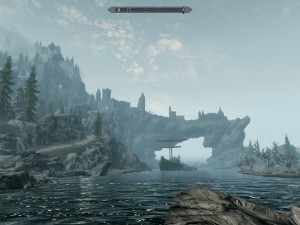Exhibitions and virtual worlds
During my ongoing literature review I often discover interesting facts about things I’ve never thought about. Sometimes I can connect these facts with my own observations: The result is mostly a completely new idea why things are as they are. Maybe these ideas are new to you, too. Therefore I’ll share my new science based knowledge with you!
This week: This time, I think about an interesting conversation with a curator I met during my vacation in Iceland. He was really open minded and saw a great potential in the use of virtual reality and virtual worlds in order to enhance the exhibition of his museum.
Over the last two and a half weeks I was exploring Iceland. Apart from the discoveries of interesting geothermal activities, I also met a nice curator of a historic museum due to a lucky coincidence. As we were driving along one of the many gravel roads on Iceland, we saw a sign for a café and so we decided to have a short break there.
Upon arriving at the café, we discovered that the café is located at a Jón Sigurðsson museum and the only person we met there was the curator of it. After a good coffee break, we asked him a few questions about Jón Sigurðsson and about the political history of Iceland. After I revealed that I am researching the educational use of computer games, he got very excited and he immediately demonstrated us the multi-media part of the exhibition.
It was very interesting to talk to him about these multi-media features, because he was very open minded. Moreover, he saw the great potential of virtual reality and even wished to have access to more attractive ways to enhance the presentation of historical facts in a museum.
As an example, he was talking about the findings of an archaeological excavation next to the museum and that it would be really beneficial, if these old ruines could be enhanced with some virtual reality. Currently, the ruins of the first settlers on Iceland are only old stones explained with descriptive texts. In this case, it would be hard to imagine the life of the settlers over 1000 years ago. However, using virtual reality could reanimate the ruins and allow the visitors to really experience the history.
Additionally, he was also talking about the great potential of the internet these days. The current multi-media part is also accessible via the official website of the museum. However, it would be even more beneficial, if the whole museum could be made accessible from all over the world. According to the curator, it would be a huge leap ahead, if the visitors could explore and experience the knowledge presented in the museum in a more engaging way than just reading texts or listening to spoken words.
It was really refreshing to talk to someone from a completely different scientific branch and seeing the intersections of our different research fields. Moreover, the technology to recreate the history is already available. Computer games like Skyrim allow the players to explore beautiful landscapes and settlements. Additionally, the players are introduced to the background story of the gameworld by talking to Non-player-characters. It would be really interesting to reanimate an old settlement in such a Role-Playing-Game and to finally observe the learning outcome of the played history compared to a visit at a local archaeological excavation exhibition.
